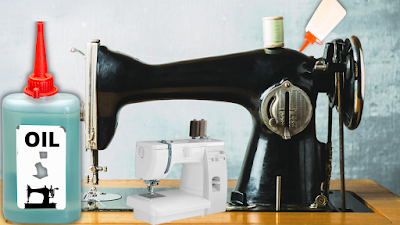Sewing Machine History and what you must know about your machine | Stitching Mall
Do you know, the sewing machine history is 230 years old.
Thomas Saint invented the 1st sewing machine in England in 1790, marking the beginning of the history of sewing machines in the world. In India, the first sewing machine was introduced in Bombay (now Mumbai) in 1851, which means it has been over 170 years since the first sewing machine was introduced in India.
Today we're going to take a journey through the history of sewing machines in the world and in India.
You’ll not only learn some interesting facts about the history of sewing machines but also tips on how you should choose the best sewing machine and what to expect in the sewing industry in the coming years.
Sewing has been an essential part of human life for centuries, and the invention of the sewing machine has revolutionized the way we create clothes, accessories, and more.
The first sewing machine was invented in 1790 by a British inventor named Thomas Saint. However, it wasn't until 1846 that the first practical sewing machine was invented by Elias Howe, an American inventor. The machine used a lockstitch that was similar to hand-stitching and could sew 250 stitches per minute.
The sewing machine quickly became popular in the United States and Europe, and by the 1860s, the demand for sewing machines had increased so much that manufacturers were producing over 200,000 machines a year.
In India, the sewing machine was introduced during the British colonial period in the late 19th century. At first, it was only available to the wealthy and was mostly used in factories for commercial purposes. But as time went on, sewing machines became more affordable and accessible to the general public.
Nowadays, sewing machines are an integral part of the textile industry in India. It's fascinating to see how a machine has transformed the way clothes are made in the country. It has made the process much faster, and people can now make a variety of garments in a shorter amount of time.
Let's take a closer look at some of the important milestones in the history of sewing machines.
In 1846, Elias Howe invented the first practical sewing machine in the United States. The machine used a lockstitch that was similar to hand-stitching and could sew 250 stitches per minute.
In 1851, Isaac Singer improved upon Howe's design and patented the first commercially successful sewing machine. The machine was more durable and user-friendly, and it quickly became popular among consumers.
In 1877, the first electric sewing machine was invented by James Edward Allen Gibbs. The machine used a motor to power the needle and was much faster than its mechanical counterparts.
In 1905, the first portable sewing machine was invented by Singer. The machine was compact and could be easily transported, making it popular among homemakers.
In the 1920s, the first sewing machine with a zigzag stitch was invented by Singer. This opened up a whole new world of possibilities for designers, who could now create more intricate designs and patterns.
In the 1960s, computerized sewing machines were introduced. These machines could automatically control the stitching, making it easier for designers to create complex designs.
In India, the first indigenous sewing machine was invented by Kayu Shah in 1935. The machine was called the "Shah Model" and was manufactured in Bombay. It was a portable machine that was affordable for the general public.
In the 1950s, the Indian government established several public sector companies to produce sewing machines, including Singer India and Usha. These companies helped to make sewing machines more accessible to the general public, and the demand for sewing machines increased rapidly.
Today, sewing machines continue to evolve with new technologies such as automatic threading, touch screens, and even Wi-Fi connectivity. The possibilities are endless, and it's exciting to see where the future of sewing machines will take us.
If you're interested in pursuing a career in the sewing industry in India, there are a few things to keep in mind. First, it's important to have a strong understanding of sewing techniques and patterns. This can be achieved through formal education or through self-learning.
Secondly, it's essential to invest in a good quality sewing machine. There are several brands available in India, including Usha, Singer, Brother, and Janome. Each brand has its own unique features and benefits, so it's important to do your research before making a purchase.
Usha is a well-known and trusted brand in India, offering a range of sewing machines for both beginners and professionals. Their machines are known for their durability, affordability, and ease of use.
Singer is another popular brand in India, with a long history of producing high-quality sewing machines. Their machines are known for their speed and precision, making them ideal for professionals.
Brother is a Japanese brand that produces a range of sewing machines for different skill levels. Their machines are known for their advanced features, such as automatic thread cutting and adjustable speed control.
Janome is a Japanese brand that produces high-quality sewing machines for both beginners and professionals. Their machines are known for their reliability, ease of use, and versatility.
When purchasing a sewing machine, it's important to consider your skill level, the type of projects you will be working on, and your budget. Investing in a good quality machine can make all the difference in the quality of your work and the success of your career.
To learn more about the best sewing machines in India, please visit Stitchingmall.com

Comments
Post a Comment